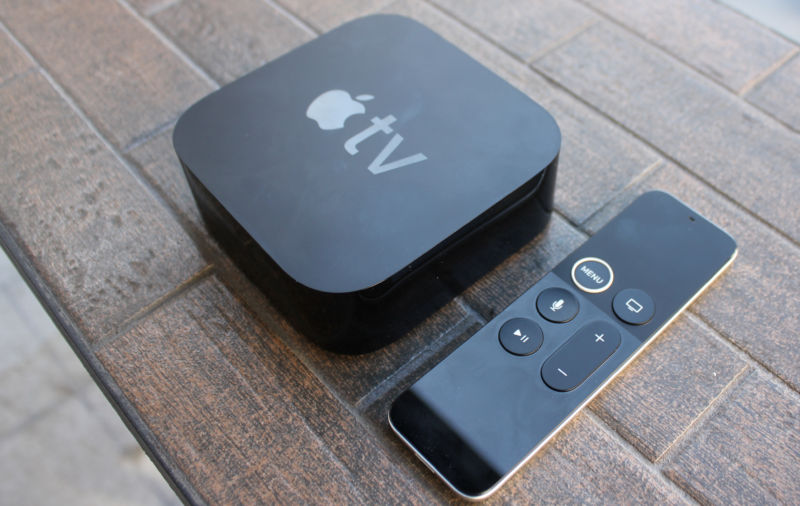
Netflix has confirmed that it no longer supports AirPlay, citing "technical limitations" with Apple's video-slinging feature. The reasoning isn't exactly about technical limitations that prevent Netflix from supporting the feature at all, though. Rather, Netflix has either chosen not to support it because the company can't control the user experience the way it wants to or because of bigger issues of competition and collaboration between the two companies.
AirPlay is a feature in Apple devices (and now in some third-party devices from partners like LG and Samsung) that allows streaming audio or video from one gadget to another over the local network. A few days ago, users began noticing that they could no longer use AirPlay in the iOS Netflix app, and MacRumors discovered that a support document on Netflix's website had been updated to say, "Airplay is no longer supported for use with Netflix due to technical limitations."
Netflix soon elaborated with an official statement to certain press outlets covering the story. Here's the statement:
We want to make sure our members have a great Netflix experience on any device they use. With AirPlay support rolling out to third-party devices, there isn’t a way for us to distinguish between devices (what is an Apple TV vs. what isn’t) or certify these experiences. Therefore, we have decided to discontinue Netflix AirPlay support to ensure our standard of quality for viewing is being met. Members can continue to access Netflix on the built-in app across Apple TV and other devices.
Starting at this year's Consumer Electronics Show in January, major TV-makers announced support for AirPlay, whereas users could previously typically only stream content to their TVs via AirPlay by using an Apple TV set-top box or plugging another Apple device into the TV via the HDMI port. (Some third-party devices did already support AirPlay, though—for example, the Sonos One.)
The way Apple has implemented AirPlay, Netflix does not have access to information about the device to which a user is streaming. It could be an Apple-made streaming box, or it could be a Samsung TV, among other things. Netflix is arguing that not having this information means it can't certify the target device to ensure a quality experience.
While that might technically be true, there are definitely possible design approaches that would circumvent that issue, and it's perplexing that Netflix doesn't seem to have the same policy regarding Android TV devices that support Chromecast. (Chromecast is an AirPlay-like feature offered by Google.)Observers have understandably raised the question of whether Netflix is doing this to undermine Apple for launching a competing streaming video service in Apple TV+, but a Netflix spokesperson told The Verge, "It’s not a business competition play."
Another possibility is that Apple prevents Netflix from accessing user data the company wants via AirPlay on those third-party TVs and other devices. Some observers on Reddit and Slashdot have also speculated that this could be an anti-piracy play—but the continued, unfettered Chromecast support pokes a hole in that idea.
Finally, it's possible that Netflix has simply reasoned that it can offer a quality app experience on the Apple TV, so it can afford to drop this feature there—but it can't on Chromecast, so it has to leave this door open for Chromecast or else give up on being able to serve the large number of customers who own Chromecast solutions. In other words, Netflix might be making a very Apple move of forcing users to access its service via the method it can control most completely.
Even if we take Netflix's word that this is not about business competition, this is the latest in a series of limitations in how Netflix and Apple services work together—or rather, how they don't.
Netflix was a glaring omission from Apple's TV app on iOS devices and the Apple TV. The app rounds up the latest content from multiple streaming platforms (from Hulu to HBO Now to network apps like Comedy Central) in one feed for the user. Netflix recently announced that it would not participate in Apple's new video service which expands on that concept, and it also ended the ability to subscribe to the Netflix service through Apple's billing system (thus avoiding giving Apple an admittedly significant cut of the revenue). Also, Netflix's new interactive series like Bandersnatch do not work on the Apple TV.
Netflix still offers native apps for the Apple TV and iOS devices, but that's the bare minimum. It's hard to determine whether Netflix, Apple, or both are ultimately responsible for the current state of affairs—there are likely some aspects to all this that are not publicly visible—but users seem to be the ones paying the price for the ongoing failure of these two companies to work productively together on cutting-edge, positive user experiences.
reader comments
238